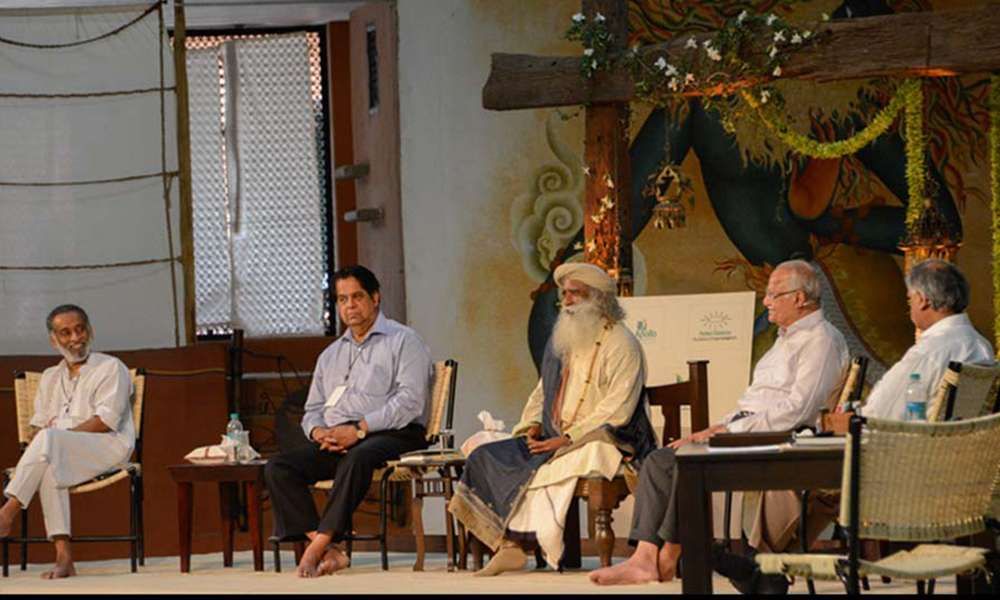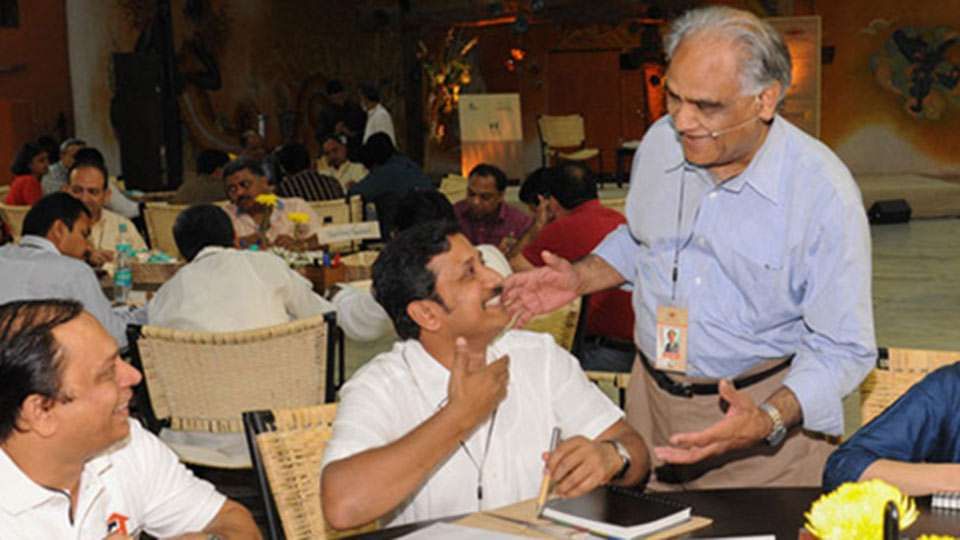Built to Last – The Keys to a Strong Organization
A participant at last year’s INSIGHT program asks KV Kamath, Chairman of ICICI, popular CEO coach Ram Charan, and Sadhguru, what it takes to build a strong organization.

A participant at last year’s INSIGHT program asks KV Kamath, Chairman of ICICI, popular CEO coach Ram Charan, and Sadhguru, what it takes to build a strong organization.
Participant: Mr. Kamath, Sadhguru and Mr. Ram , you guys have been building awesome institutions and organizations. Could you give us some advice on what the key ingredients are if someone was to build an organization that should last for a hundred years or more?
K.V. Kamath: One – you need to look at the foundation. What should the foundational core of the organization be, and which values should it be built on? Once you have defined the values of the organization, make sure they are explained down the line to every level at all stages so that everyone understands them. Then you go through the parameters that you will use to get people into the organization – in terms of competences and merit, not gender – the right mix. That way, you start building a core which is healthy.
Then you need to look at how the businesses are likely to evolve. A lot of times, we find that a company fails because the organization structure is not able to cope with business change. You try to fit all the businesses that you want to do or all the opportunities that you have under a central organization structure. You need to build a culture where the organization is like a living being, changing shape and character as the businesses change shape and character.
Then you very carefully tend to this organization on an ongoing basis. First, you tend to it yourself, and then you make sure that the next person who is going to tend to it has understood what this involves, and of course you also need a buy-in from the team. You make sure that this succession process gets emulated time after time, based on what is appropriate at that point of time. There are great companies that have lasted very long, which you can learn from.
Dilip Cherian: Thank you. I think that’s absolutely brilliant to build it up from the foundation. Sadhguru, you also have a long-term vision. You said the Dhyanalinga will stand for 5000 years. How do you create an organization that lasts for hundreds of years?
Sadhguru: For a foundation like this to function, there are four or five layers of fabric that hold it in place. The topmost layer is the huge volunteer force, which does most of Isha’s activity outside. This is a nebulous group that keeps changing its shape and size constantly. It requires a whole lot of mass management to keep them all spirited, focused, and going.
Subscribe
The next layer are the people who do this mass management. These are people who have gone through an intense training. A part of their training is spiritual in nature. Another part is a certain level of management training – not delivered like in a business school in terms of principles etc. but in a completely different way.
Another layer is largely focused on their inner development – not doing much work on the outside. Probably in the next decade, I am going to focus a huge amount of my time on those people who are experientially in a different state. That core is very important. Without that, there is no strength to a spiritual movement.
And beyond that, you create energy forms that keep people oriented in a certain direction, without their having to making an effort towards it. I think 70% of my time and energy goes into establishing and strengthening this, because without that energy structure, a spiritual process will not happen so widely.
If you do a survey, you will see, no matter which part of the world people are in, they feel they are here, or they feel that I am with them. This is not a psychological thing. This is about creating an energy structure which gives them that experience. There is something more fundamental than that which no one can ever articulate in logical words. This most important thing is your connection with the source of Grace. Without that, things will not happen the way they happen.
There are spiritual movements that are largely about providing solace. Solace in the sense that if you do not feel okay, they will tell you, “Everything will be okay. Don’t worry. God is with you.” I am not saying this is not important. When someone is shattered, solace is important. But I have never been interested in providing solace. In fact, if people think they are doing well, my business is to point out deeper problems to them. I dig up problems that they have been having but were not conscious of.
Once you are conscious of a problem, you will naturally want to deal with it. Spiritual process is not about providing solace but seeking a solution to the basic life process. In that context, what Isha offers is revolutionary because on day one, when people come for an introductory talk, we question their faith, their gods, and the fundamentals people have believed in for thousands of years.
Normally, a spiritual movement that demands that kind of transformation will not become a mass movement – it will always be exclusive, for the few. But we have managed to make it into a mass movement. The dedication, commitment, and skill of people around me has made this happen. And beyond that, this has been achieved because they are not only holding it as a part of their lives but as more than their lives.

Dilip Cherian: Okay. Professor Ram Charan, would you like to say something?
Ram Charan: I am not using a hundred-year vision – just perpetuity. If you are creating a company for perpetuity, you have to have three elements. One is a culture that renews itself as the external conditions change. You create the culture where the internal decision-making about business and people continually adapts to external changes. Number two ¬– and this is where people miss it – you produce leaders who will steer the organization. No organization is going to perpetuate for long without having a leadership that will steer it. And number three – if you want a perpetual organization going forward, you need mechanisms inside the culture that will produce those leaders and that will correct the leadership if they made a mistake.
Editor’s Note: Follow INSIGHT on Twitter and LinkedIn.
This article is based on an excerpt from the June 2014 issue of Forest Flower. Pay what you want and download. (set ‘0’ for free). Print subscriptions are also available.



